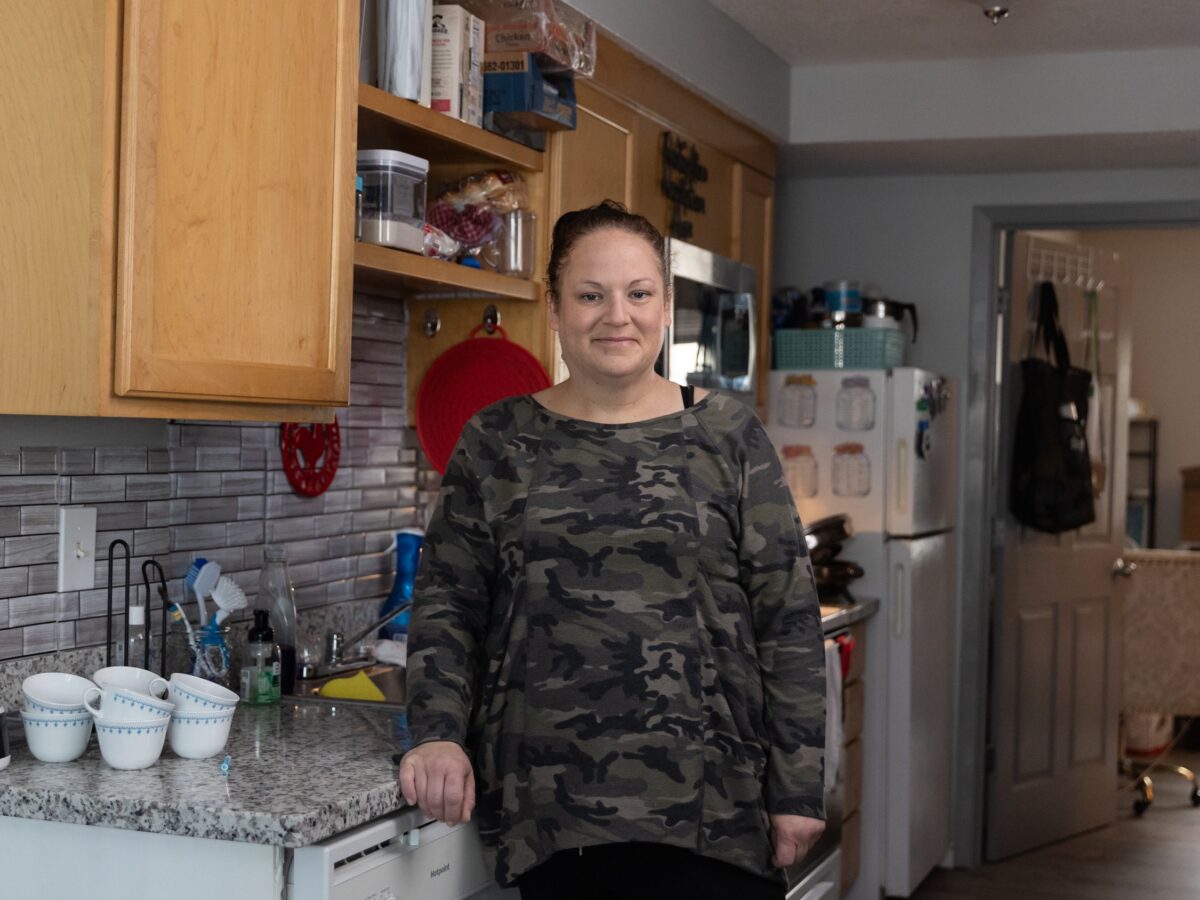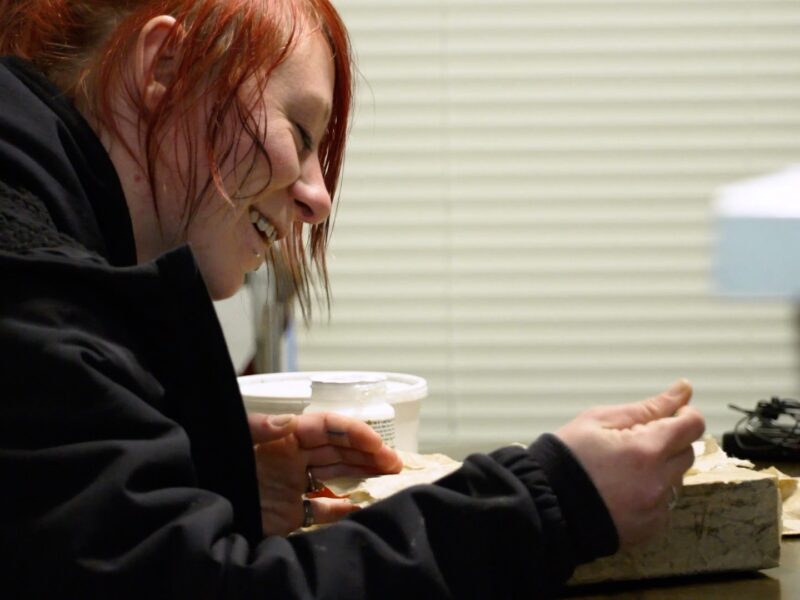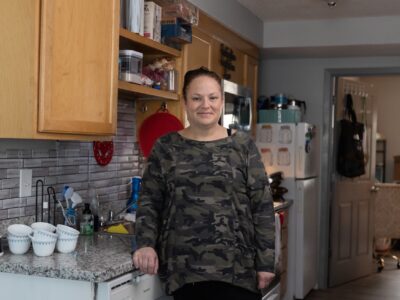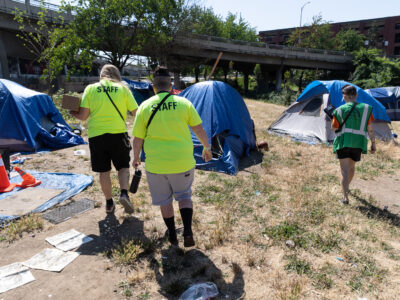July 24, 2024
Housing Multnomah Now pilot initiative houses 311 households
Pilot exceeds goal before June 30, 2024, deadline
The Joint Office of Homeless Services, through its network of providers, has housed 311 households through its Housing Multnomah Now pilot program — exceeding Chair Jessica Vega Pederson’s goal of housing 300 people by June 30, 2024.
The program housed hundreds of the most vulnerable people in the County, with a focus on serving people living outside in tents, on sidewalks and in vehicles — including people who recently moved into shelters from the street. The housing placement work was made possible with the work of seven nonprofit homeless services providers: Transition Projects, Cultivate Initiatives, Rockwood CDC, Urban League of Portland, Trash for Peace/Ground Score Association, and Sunstone Way (formerly All Good Northwest).
“We aim high in our response to the crisis we are seeing on our streets. That’s what the community expects and should expect,” said Chair Jessica Vega Pederson. “With this program, we experimented, adapted, focused on geographic diversity, and delivered the results we promised.”
Pilot program tests new approaches to addressing unsheltered homelessness
Announced in early 2023 and then formally launched last June, the pilot program’s initial focus was on serving people staying in significantly large high-impact campsites in the central city and east side, starting with a campsite in Northwest Portland near the Steel Bridge. But changes on the ground, including a reduction in the presence of large campsites, led leaders to shift the focus of the program to a larger array of geographic locations, including Thousand Acres in East Multnomah County, Portland’s Old Town, and the Gateway neighborhood.
The program piloted new ways of conducting outreach, including bringing housing navigators, case managers, and dedicated funding for rent assistance and other needs directly to campsites. In addition to offering a blanket or referrals, street outreach workers were able to directly connect people to housing resources that aren’t often available as part of their work.
“Housing Multnomah Now was a game changer for supporting our participants’ transitions into permanent housing opportunities. It’s been one of the most seamless outreach tools available to us since the pandemic started,” said Katrina Holland, Strategic Engagement Officer and Interim Director of Housing Services at Urban League of Portland, one of the housing placement providers. “The flexibility, large sums of dollars planned for rent assistance, and program structure responsive to culturally specific needs was very helpful in being able to meet our participants where they are and hope for the future.”
The program also piloted new technology tools, serving as a “pre-pilot” for a mobile app that allowed street outreach providers to input data in the field that geotagged the location of their interactions. A similar tool was later piloted on a wider scale across the County as part of the Joint Office’s work on the Built for Zero initiative. Learnings from those projects will guide future data collection work for street outreach teams. And, lessons from these efforts are being used by the Joint Office in its work to develop a tool that would allow providers to identify available shelter beds.
Through the pilot, the Joint Office was able to build — and will continue to strengthen — connections between outreach teams, case managers and alternative shelter providers. This was due to the Multi-Agency Collaborative group that led both the Housing Multnomah Now pilot and the local response as part of the statewide Oregon All In initiative. The collaborative borrows elements from an emergency command structure typically used during disasters.
The group met weekly, convening the key people working on the initiatives, including leaders from the City of Portland and Mayor Ted Wheeler’s Office. The group worked together to select the geographic locations for the program, determine the eligibility requirements, and adapt to challenges they were facing along the way.

Jessica's Story


When I found out that I had a place, I just couldn’t believe it.
Changing conditions on ground lead to program adaptation
Key to the success of the pilot was the ability to pivot based on conditions on the ground — adjustments made possible because of the high level of communication and collaboration in the Multi-Agency Collaborative.
Early in the pilot, providers found that people were no longer stationary in large campsites, but were instead more likely to be reached in smaller, scattered campsites. That shift in camping patterns made the original program design difficult to scale as intended.
At the same time, the change dovetailed with the opening of new low-barrier shelter options that focused on serving people affected by camp cleanups, like the Clinton Triangle Temporary Alternative Shelter Site.
Those locations needed additional resources to improve their “flow-through” to housing. And these factors led the Multi-Agency Collaborative to adjust the eligibility criteria for Housing Multnomah Now program and expand the referral pathways, allowing people who had moved into shelter from the street within the past 90 days to qualify for the program.
And instead of only serving people in specifically designated geographic areas, the program began providing housing resources to street outreach workers who were serving people living unsheltered across the County.
Even as the program continued to operate in specific zones, in an environment where there were fewer longer large campsites, partners in the Multi-Agency Collaborative decided it was not reasonable to leave out equally vulnerable eligible people who happened to be camping outside those zones.
These refinements to the program design, reflecting changing conditions in the community, drastically increased the number of housing placements in a short period of time. They also allowed the program to continue housing some of the most vulnerable and highly impacted people in our community.
“These program changes show that we are able to adapt to the realities of our community. The crisis we are seeing on our streets is urgent, and it demands we provide a flexible, responsive approach,” said Joint Office of Homeless Services Director Dan Field. “We didn’t rigidly stick to something that wasn’t meeting the needs of our community. We made adjustments intentionally that allowed us to work quickly while still serving our most vulnerable community members. These pivots also helped free up desperately needed shelter beds, allowing more people to come from the streets into shelter.”
Pilot program builds on Joint Office’s other efforts
The housing placements build on the Joint Office’s success in rehousing 234 households through Gov. Tina Kotek’s Oregon All In initiative, which also exceeded the state’s goal. A total of 545 households have been housed across the two initiatives.
The placements are just part of the work of the Joint Office to help people transition from homelessness to permanent housing. In the first nine months of the fiscal year (July 1, 2023, through March 31, 2024), Joint Office funding helped 3,587 people move out of homelessness and into housing. The placements achieved through Housing Multnomah Now in the fourth quarter of the fiscal year, along with the rest of the Joint Office’s housing work, will add to that number.
While the Housing Multnomah Now pilot program ended June 30 and won’t house additional people next fiscal year, it will continue providing housing assistance, case management and support services for people placed in housing during the pilot. The Board of Commissioners allocated $5 million for the Joint Office to fund rent and services for people who already moved into housing as a result of the program, helping ensure their continued stability in housing.
This month, providers will enter their final housing placement data into the Homeless Management Information System (HMIS). Building off that data, the Joint Office will be evaluating the lessons learned throughout the pilot and expand on what worked to move unsheltered community members into housing.
And, the County will continue to expand the number of people it will house moving forward through other programming and investments, building from the experience of the Housing Multnomah Now pilot program.
“This program’s success means a great deal to the people whose lives have been impacted – and we know there are many more who need and deserve these resources,” said Chair Vega Pederson. “Today we celebrate the success, carry the lessons we learned forward in the larger work of the Joint Office and redouble our efforts to break down silos, identify and fill gaps in our systems and commit to continue making more of these resources available.”






